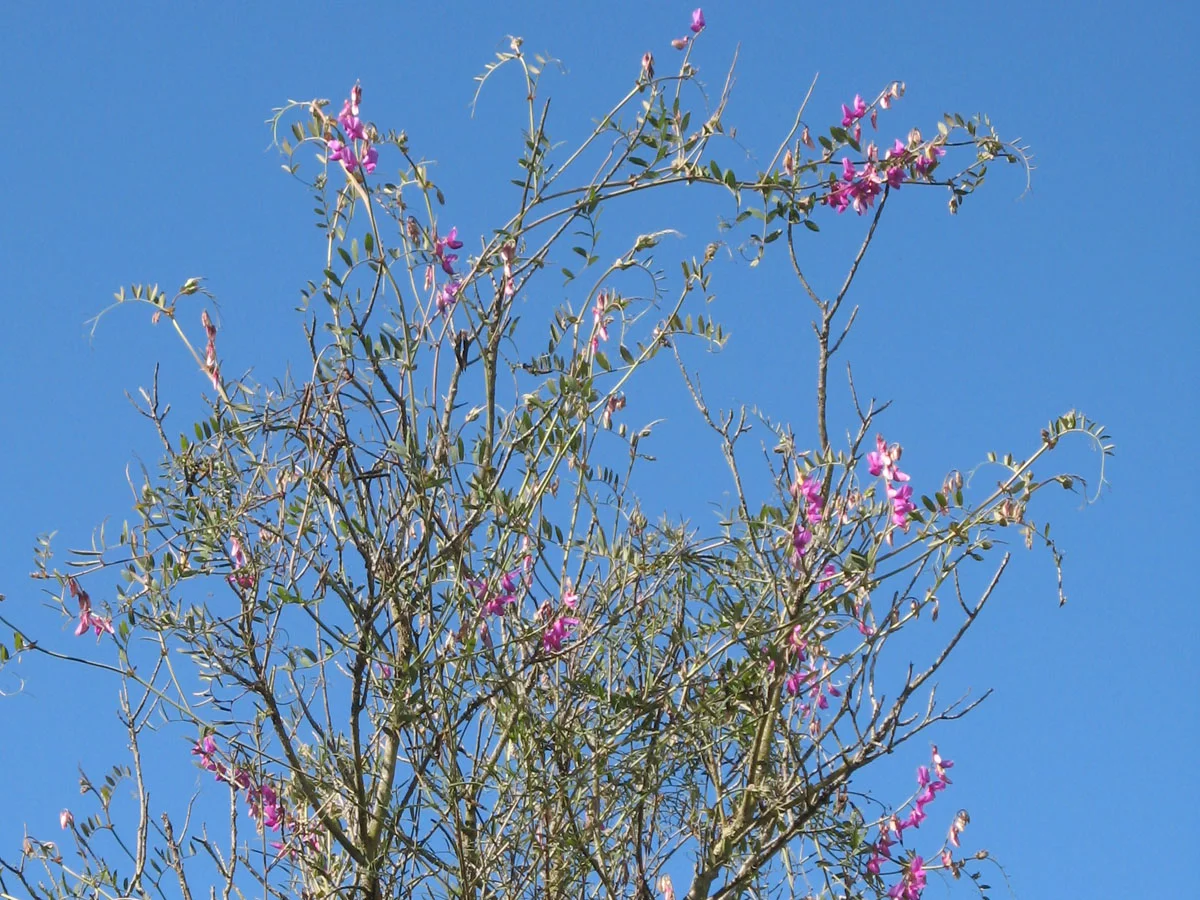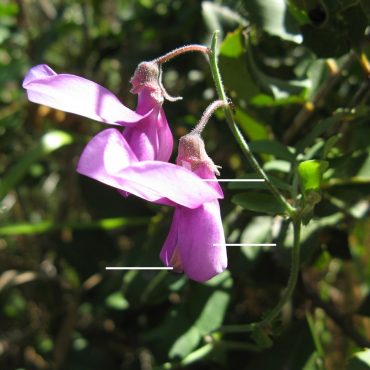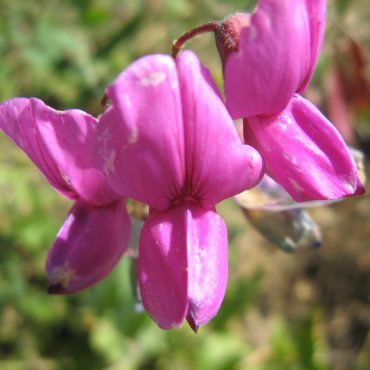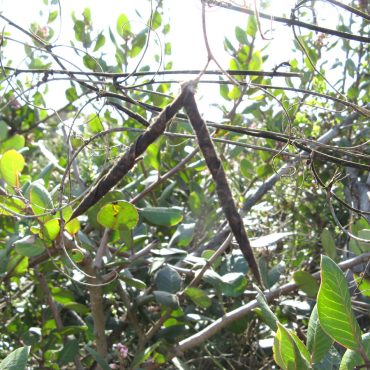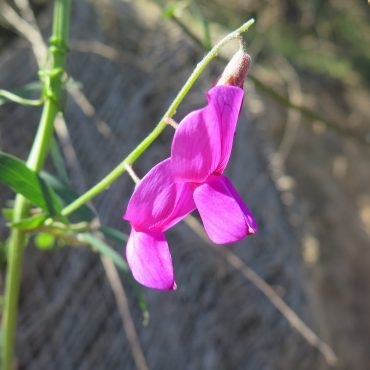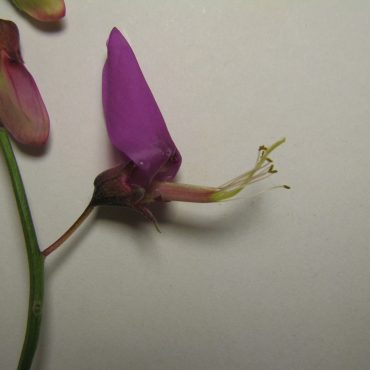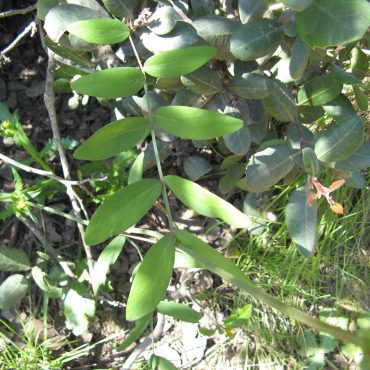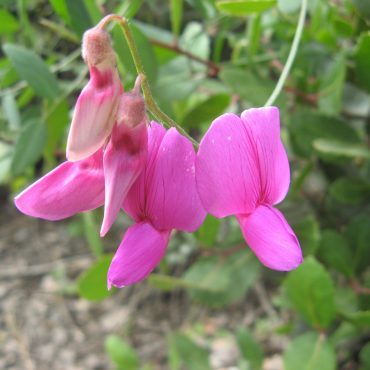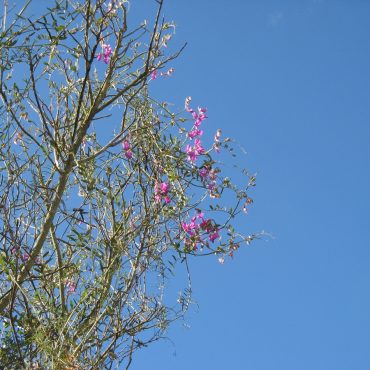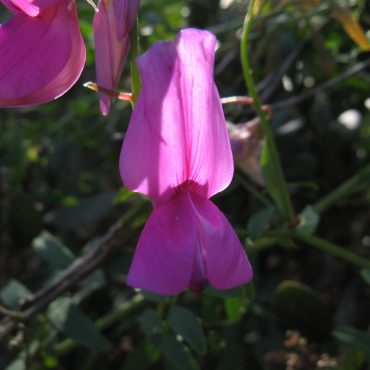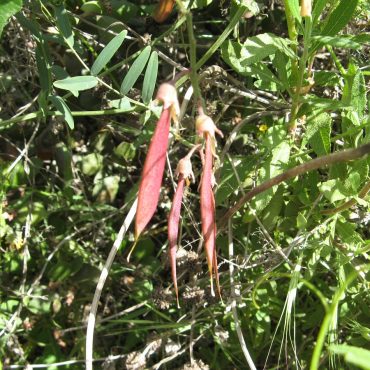Description
4,26,35,59
Chaparral sweet pea is a branching, perennial vine that twines through shrubs and small trees. Stems are four-ridged and often reddish. The leaves are pinnately compound, with up to 12 leaflets arranged on either side of a central stem). Leaflets may be alternate along the axis or approximately opposite. At the base of each leaf is a pair of small stipules, one on each side of the leaf. These vary in shape; ours tend to be “V” shaped. Leaflets are narrowly oval to linear, less than two inches (5.3 cm) long; the outer ends are rounded with a tiny point; the leaflet margins are smooth. The terminal leaflet is typically modified into a branched, coiling tendril; occasionally one or more tendrils are found along the leaf axis, originating at the base of a leaflet or or replacing a leaflet altogether.
The flowers of chaparral sweet pea are similar to those of the ornamental sweet pea. A few to several (6 – 17) rose to lavender flowers occur along peduncles, opening sequentially from the bottom. In the Reserve, flowers are rose pink, although flowers of lavender to white, and two-toned are found elsewhere. Flowers are “papilionaceous” (meaning butterfly-like; here, shaped like a pea flower), bilaterally symmetrical, with five sepals and five petals. Sepals are fused into two unequal lips, the upper with two teeth, the lower with three large lobes. There is one large petal, the banner, held upright, two lateral petals, the wings, directed forward and enclosing two smaller petals which are partially fused along the lower margin, into the keel which, in turn, encloses the reproductive structures. The banner is obovate, bent upward, often with faint, radiating darker nectar lines that help guide a pollinator to the nectar source deep in the throat of the flower. There are ten stamens, nine are united in a column around the pistil and one is free. The pistil has a superior ovary and one long, flattened style with a small, capitate stigma; the style bends upwards from the ovary and extends just beyond the anthers. The main bloom occurs between January and June.1
The fruit resemble a garden pea pod. The style persists as a beak. When dry, the two valves of the pod twist open from the outer end into two tightly coiled cylinders, releasing five to eight brownish, spherical seeds that are attached along the upper side of the pod. The peas of this genus often contain a paralyzing toxin (lathyrogen), but we could find no analysis of the toxins in our species.

